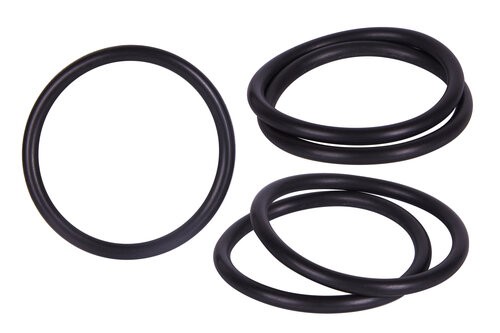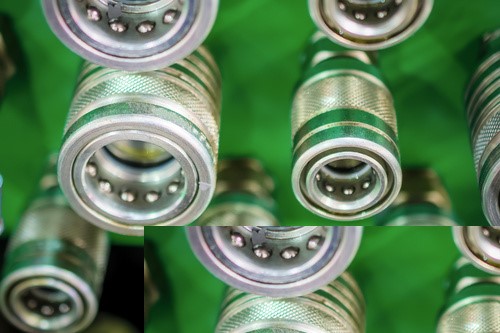We all know what a hydraulic fitting is, and we sometimes refer to them as hydraulic couplers. However, the term hydraulic coupler usually refers to quick connect fittings.
Hydraulic fittings are used to connect a hydraulic hose to components like hydraulic cylinders, pipes, tubes, valves or other hydraulic hoses. They come in a variety of thread styles, including JIC, NPT, BSP, BSPT, Metric and others. In applications that require added leak resistance, we use fittings that incorporate O-rings. Hydraulic fittings with O-rings can withstand low to moderate temperatures and high pressures.
The most popular types of standard threaded fittings incorporate O-rings to ensure a tight, leak free seal are ORFS (O-ring face seal) and ORB (O-ring boss, a.k.a SAE straight thread O-ring fittings), each incorporating straight threads.
Additionally, Hydraulic Quick Connect Couplings also utilize O-rings, providing the ability to quickly connect and disconnect hydraulic hoses. Often referred to as quick disconnect or quick-connect fittings/couplers, they allow fluid flow when the male and female sections are connected. They incorporate internal self-sealing valves, similar to check valves, which automatically stop the flow when the two halves are disconnected. For applications where hoses are frequently disconnected and reconnected, quick connect couplings are the most practical fittings.
How does a quick connect fitting work? Just pull away from the gas pump with the nozzle still in your car. The hose will pull out of the gas pump—but it won’t leak, because it’s connected to the pump with a quick connect fitting. We don’t recommend doing this on purpose. 
Replacing O-rings
Faulty O-rings are the main source of leaks in ORFS, ORB, Quick Connect hydraulic fittings and other hydraulic couplers. In fact, replacement of O-rings is typically quick and easy, except in tightly restrictive spaces. It’s recommended to change O-rings during normal maintenance schedules. Whenever a leak occurs at or near a fitting, the first thing to check is the O-ring.
1. Replacing an ORFS O-ring: ORFS fittings are often considered the best for leak control. These O-ring face seal fittings have an O-ring in a dovetailed or half-dovetailed, recessed, grooved area at the face of the male thread and at the bottom of the female connection. The dovetailed groove holds the O-ring in place. By using a straight or angled pick tool which has a flat surface on its end, pull the old O-ring out, taking care not to scratch the fitting surface. Do not use a scratch-all or other sharp instrument-- they are more likely to scratch the fitting. When inserting any new O-ring, ensure it’s clean and dry before pressing it into the recessed groove. Once installed, the O-ring must be externally lubricated before connecting to another port. This can be accomplished with the fluid being used in the system or any hose assembly lubricant.
2. Replacing an ORB O-ring: The O-ring on an O-ring Boss Fitting seats on the shoulder of the fitting, below the male threads. The same method is used when removing the existing O-ring: simply slide the new O-ring over the threads and let it rest/seat on the shoulder of the fitting.
3. Replacing a Quick Connect O-ring: The O-ring is recessed rather deep inside a quick connect hydraulic fitting. As above, use a straight or angled pick tool with a flat surface on its end to reach in and pull out the old O-ring, being careful not to scratch the inside of the coupler. To install the new O-ring, simply place it horizontally into the coupler. Then, push it in with your finger (or pick tool if it’s a small diameter), leveling it out with the ridge at the bottom where the old O-ring rested. If it doesn’t seat evenly, use the pick tool to press the O-ring into the recess, taking extra care not to puncture or cut the O-ring. As an option, lubricating the new O-ring with a bit of silicone grease makes it go in a bit easier.

Sources Include:
